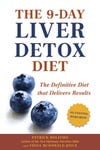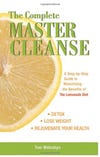
Cleansing is big businesses. Last year, consumers spent more than $100 million on supplements and fiber products for detoxifying, according to Schaumburg, Ill.-based market research firm SPINS. Yet the health and beauty section is only part of the picture when customers want to restore their systems.
From raw-food cleanses to juice fasts, there are also plenty of foods and beverages for detoxification, but helping consumers choose the best dietary option can be daunting. To help you steer inquiring minds in the right direction, here, nutritionists offer a side-by-side comparison of three popular food-based detoxes, and answer possible customer questions.
Liver cleanse
Patrick Holford, author of The 9-Day Liver Detox Diet (Piatkus, 2007)
 Natural Foods Merchandiser: What health question might a retailer receive that this cleanse would address?
Natural Foods Merchandiser: What health question might a retailer receive that this cleanse would address?

“I feel tired all the time,” “My skin is really bad,” “What’s the solution to body odor?” I also get: “Post-Christmas my energy is low. How do I get my vitality back?” or specific questions on liver detox and recovery from too much alcohol or other toxic substances.
NFM: Why is the liver the main focus of this cleanse?
Enhancing your ability to detoxify, which is primarily the function of  the liver, leads to an improvement of nearly every aspect of health, including increased energy, better hormonal balance, better skin and less inflammation and pain. It also aids in weight loss.
the liver, leads to an improvement of nearly every aspect of health, including increased energy, better hormonal balance, better skin and less inflammation and pain. It also aids in weight loss.
NFM: What’s the cleanse regime?
It’s a nine-day process. There are five habits to make: eating more of specific fruits and vegetables, taking antioxidants, taking specific supplements, drinking a lot of water and exercising. There are also five habits to break: alcohol, caffeine, wheat, milk products, meat and deep-fried foods.
NFM: What are some foods participants can expect to eat?
Greens: They are full of vitamin C, folate and chlorophyll, all of which are exceedingly good for you.
Cruciferous vegetables: Foods such as cabbage, cauliflower, broccoli and Brussels sprouts contain glucosinolates—organic compounds of sulfur and nitrogen that help the liver detoxify.
Sulfur: Onions, garlic and shallots are excellent food sources of sulfur, which gives the body raw ingredients to make glutathione, a tripeptide that is critical for detox.
NFM: Which supplements support this cleanse?
I suggest digestive enzymes, probiotics, glutamine powder and a good-quality multivitamin, plus extra vitamin C and essential fats to help in the digestive process.
Seasonal detox
Ann Louise Gittleman, author of Fat Flush For Life (De Capo, 2009)
NFM: What health question might a retailer receive that this cleanse would address?
The cleanse alleviates symptoms related to toxic overload, including allergies, anxiety, backache, bad breath, bloating, circulatory problems, constipation, cough, depression, digestive distress, dizziness, eczema, food and/or environmental sensitivities, fatigue, frequent colds, headaches, hives and skin rashes, lowered immunity, joint pain, mood swings, mucus problems, nausea, sinus problems, sore throat, stiff neck and wheezing—oh, and cellulite, a major claim to fame for this plan.
NFM: What area of the body is the primary focus? 

First and foremost, this cleanse supports the liver—the body’s detoxifying and fat-burning organ. While the liver works as the body’s filter, the lymph channels are its drainage system, and also require attention during detox. Many people—even experienced detoxers—don’t understand the crucial role lymph plays in health and weight loss.
NFM: What’s the cleanse regime?
This cleanse targets specific organs that need support during various seasons. For example, in autumn I focus on the lungs and large intestines, and in the winter, kidneys and adrenals. Each phase lasts three months. The year-round program includes healing teas and herbs and spices like chamomile and fenugreek, along with warming foods in the winter and fall (more root veggies, soups, stews) and cooling foods (more raw salads and fresh juices) in the spring and summer.
NFM: What are some foods participants can expect to eat?
Cranberry water: A combination of water and unsweetened cranberry juice is one of the best sources of antioxidant proanthocyanidins and phenols.
Slimming oils: Essential fatty acid–rich oils such as flaxseed and fish oil help you feel full and aid in balanced hormone production, oxygen transport and vitamin-mineral absorption.
Powerhouse proteins: Lean proteins such as eggs, poultry and fatty fish provide the building blocks for enzymes, hormones and antibodies, and trigger the production of glucagon—the pancreatic enzyme that balances insulin.
NFM: Which supplements support this cleanse?
Gamma linolenic acid is recommended throughout each season to keep skin moist and taut, and to mobilize fat. Conjugated linoleic acid is another healthy fat staple.
Liquid fast
Tom Woloshyn, author of The Complete Master Cleanse (Ulysses, 2007)
NFM: What health question might a retailer receive that this cleanse would address?
The program has been widely used as a weight-loss diet, but will help with digestive issues, including bloating and irritable-bowel syndrome. Other problems such as low energy, insomnia, incontinence, arthritis, allergies, asthma and serious  circulatory issues can be reversed.
circulatory issues can be reversed.
NFM: What area of the body is the primary focus?
This cleanse is not specific to a particular area of the body. It will cleanse any area that the body deems necessary to heal—usually newest to oldest conditions from outside to inside. I know the diet can be controversial; however if done correctly, this cleanse leads to profound overall health. The key is to precisely follow the directions explained in the book. When people take shortcuts, it can lead to malnourishment and exhaustion.
NFM: What’s the cleanse regime?
A liquid mono-diet works with, and complements, the body’s own cleansing and detoxifying processes, while at the same time effectively nourishing the body. The cleanse is usually done for a minimum of 10 days. A fresh lemon drink made with maple syrup and cayenne is consumed throughout the duration, along with water and optional herbal teas.
NFM: What are some foods participants can expect to eat?
Maple syrup: This raw, unprocessed sugar provides the fuel for your body over the period of the cleanse, along with trace amounts of minerals and vitamins.
Lemons: Lemon is an acidic fruit yet, surprisingly, is highly alkalizing when digested. The fruit also contains high levels of potassium, calcium and magnesium, making it nutritiously rich.
Cayenne pepper: This spice acts as a catalyst to make the lemon juice more effective. It also boosts the metabolism and helps many people feel more energized while on the diet. Cayenne provides trace minerals, vitamins and capsaicin, which promotes circulation.
NFM: Which supplements support this cleanse?
Only supplements that do not require digestion are recommended, such as herbal supplements and teas, antiparasitic formulas and grapefruit-seed extract.
About the Author(s)
You May Also Like
.png?width=700&auto=webp&quality=80&disable=upscale)




